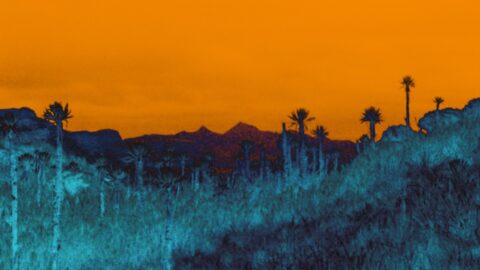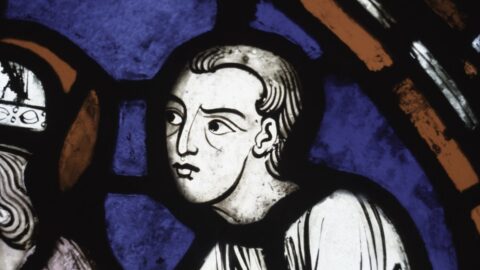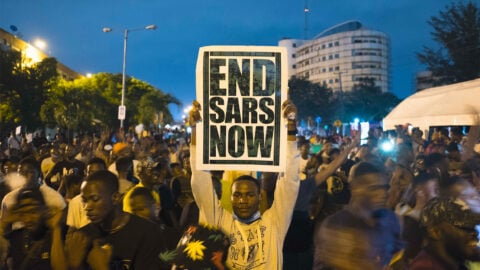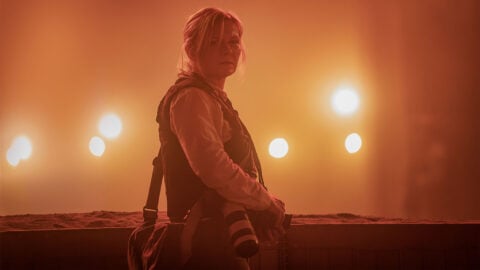Review: The Hobbit: The Desolation of Smaug
“Are they still making those?” That was the response of a middle-aged critic sitting behind me at a recent press screening when his colleague brought up The Desolation of Smaug, the second entry in Peter Jackson’s liberal three-film adaptation of J.R. Tolkien’s The Hobbit. An odd statement: the first three of “those” films, by which he presumably meant the Lord of the Rings adaptations released between 2001 and 2003, rank among the major accomplishments of 21st-century cinema. Lovingly crafted, technically virtuosic and emotionally subtle, they are still the prime examples of what a blockbuster can be when it’s made resourcefully and wastelessly by people motivated by passion over profit.

Nine years after the first trilogy wrapped came The Hobbit: An Unexpected Journey, an ambling, discursive exercise in Middle Earth immersion, wonderfully detailed yet a little dramatically inert. The fans, as always, were sharply, enthusiastically divided; critics shrugged. True, the movie wasn’t on the level of its predecessors; still, its brushed-off dismissal was perplexing. Had the times changed so sharply? The good news is that The Desolation of Smaug is a marvelous film, better paced, emotionally richer, and more tonally confident than Journey. The bad news is that Jackson’s approach to making blockbusters is starting to seem increasingly like a relic from another era.
Not that Jackson’s Middle Earth films have ever been especially modern. Their dialogue is unapologetically mannered, filled with twists of syntax (“Not idly do the leaves of Lórien fall”) and cryptic pronouncements (“A red sun rises. Blood has been spilled this night”). Their women are gossamer-voiced dream girls who barely need to be lit: they always seem to be illuminated from within by their own self-generated light. Most strikingly, the films operate within a moral universe derived from an unusual mixture of Christian theology and ancient myth. From the latter, they have inherited their rigid conception of honor, their deep-set sense of duty and their firm belief in nobility passed down through blood; from the former, their frank acceptance of man’s susceptibility to temptation, their faith in redemption through sacrifice, and their vision of life as a story written and directed by an invisible, godlike designer. In each film, there are dozens of moments in which the central quest comes a hair’s breadth from failure: a crumbling stair that has to fall at just the right angle, an arrow that needs to hit its mark within a fraction of a second, a spear that has to miss the hero’s heart by an inch. There’s little room for contingency or chance; for all those last-minute rescues and perilously close shaves to add up, each movie’s narrative has to be driven by a kind of internal, providential necessity.
In Smaug, for instance, a pair of elves who have been traveling for days arrive at their destination just in the nick of time to save a handful of cherubic children from some orcish home intruders. Giant spiders are killed seconds before they’re about to sink their fangs into major characters. Heroes come centimeters away from being incinerated in dragon-fire. Midway through the film, there’s an extended, thrilling action sequence involving two agile elven warriors, hundreds of unfortunate orcs, and twelve dwarves borne in barrels down a river at high tide, where every chance occurrence—a falling body, a runaway barrel, a broken bridge—falls neatly in time with the smooth, arcing movement of the camera and the needle-fine precision of the combatant’s leaps and bounds.

In these movies, time has always been the one thing outside the storyteller’s control—which partly accounts for why the heroes of The Lord of the Rings films were so bent on writing their own histories. They built statues, monuments and shrines, drew up maps, surrounded themselves with faded documents, and—above all—told stories. Fittingly, the plot of The Desolation of Smaug revolves around an ancient land dispute: 12 dwarves led by Thorin Oakenshield, the rightful heir to the line of the elder dwarf-king Durin, travel to the mountain where their ancestors once ruled to free their kingdom (and its great reserves of treasure) from squatting dragon Smaug, played with suave, kingly disdain by Benedict Cumberbatch in an impressive feat of motion capture.
Nearly everyone in the film is creaking under the weight of the past. Their attachment to national and regional history makes them lonely and bitter, but it’s all that connects them to their ancestors—and in Tolkien’s world, with its tense combination of ancient clan mentality and post-Enlightenment individualism, it’s your ancestry that defines you. At one point, Thorin stares out at Middle-Earth from a perch on the Lonely Mountain, profiled against the enormous carved face of his ancestor; at another, he goes nearly mad hoping to recover an ancient, potent family heirloom from the dragon’s stockpile. Much of the film takes place in an old lakeside city in the mountain’s shadow: once a thriving metropolis, now a cramped, squalid fishermen’s town whose inhabitants still tell their kids about the day the dragon came.
The Desolation of Smaug is a melancholy film: on one level, because its heroes are always looking into their national past with a vague combination of longing and resentment, on another, because Jackson seems to spend the film looking back longingly to the state of the blockbuster in 2001, before streaming, online film distribution, and changing viewing habits induced major studios to make their films still more bombastic and aggressively attention-grabbing, and before 3-D made even otherwise visually ravishing movies resemble video game cutscenes. This latter issue is especially frustrating in Smaug, in which the 3-D effects tend to blur motion, smooth out surfaces, and paradoxically drain each image of the illusion of roundedness and depth. (None of the advance screenings, as far as I know, projected the movie in its doubled frame rate version—an aesthetic choice that had drawn mixed responses in the case of the first Hobbit film.) Still, Jackson and his collaborators show their superlative attention to detail in every (virtual) frame: the blocks of ice displaced by an incoming barge at the docks of Laketown, the tiny pieces of gold cascading down the scales of a dozing dragon, the cramped, cookware-stuffed corners of a rural farmhouse, the Escher-like staircases of an elfish prison.

Occasionally Jackson’s nostalgia comes out more directly, by way of some explicit citations from the previous Lord of the Rings films: Ian McKellen’s put-upon wizard Gandalf imprisoned at the top of a dark tower much like he was in The Fellowship of the Ring; a long hike up the Lonely Mountain that recalls Frodo and Sam’s trek up the stairs to Cirith Ungol; the dwarven company’s discovery of a mass grave in an underground mine, echoing the Fellowship’s ill-fated journey through Moria; love-interest elf Tauriel—a freshly invented addition to the story—healing a wounded member of the company in a moment that points back to Arwen’s healing of Frodo in Fellowship, etc.
I don’t intend here to nitpick about any potential self-plagiarism on Jackson’s part, only to point out why it might be tempting to reduce his Middle-Earth films to a template of recurring motifs, situations and symbols. Tempting, but misguided. The patterns are certainly there, but the contexts change—and the films with them. I can’t, for instance, imagine any of the earlier Lord of the Rings movies containing a passage like Kili’s lovesick speech to Tauriel as she fixes up his wound. The scene is a logic-defying eruption of romantic excess—he spouting flowery poetic phrases, she ensconced in giant swaths of light—but to my eyes, Jackson has never made anything so desperate and vulnerable and charged with cautious desire: an expression of hope stymied, repressed and denied, but not yet given up.







